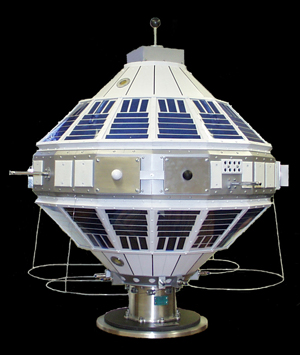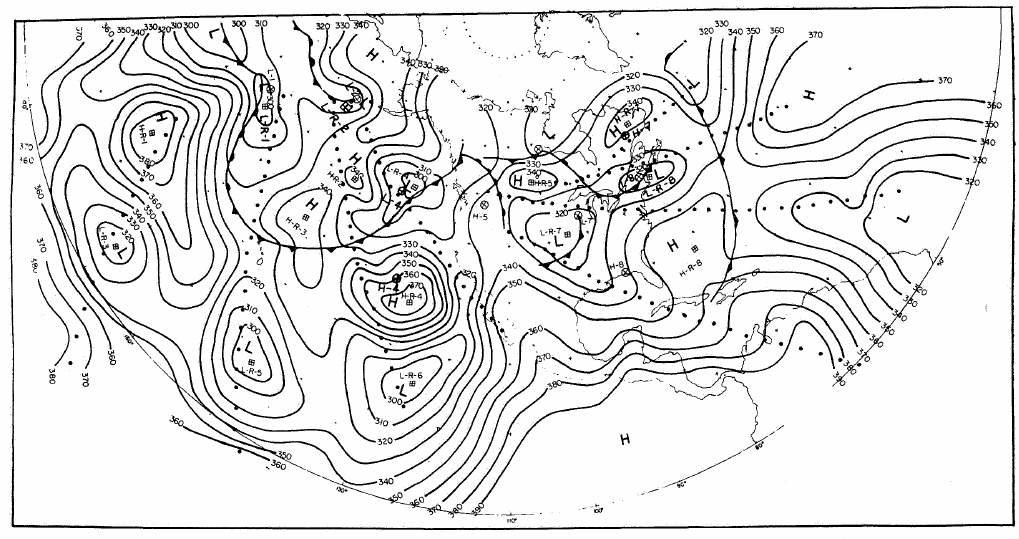60 Years of Satellite Earth Radiation Budget Observations
Posted on 28 October 2019 by Doug Bostrom
[Per remarks in comments below, a couple of corrections have been made to this article, to do with human employment of energy and Earth energy imbalance. It's always appreciated when readers with sharp eyes improve our work— thank you.]
60 years ago this month the first direct observation "Earth Radiation Budget" experiment (ERB) was successfully lofted into orbit on Explorer VII, after a string of disappointing launch failures. This deployment was only the start of an increasingly sophisticated series of experiments intended to quantify and eventually monitor the ERB. In light of subsequent development it's an event worth commemorating.
"The primary purpose of the experiment is to measure the solar, reflected, and terrestrial radiation currents to obtain the radiant heat flow to and from the earth, and ultimately to obtain a clearer understanding of the driving force behind the circulation of the atmosphere." — Weinstein & Suomi, 1961"
But first: what's the "Earth Radiation Budget," or "ERB?" This describes the net gain or loss of solar energy to or from the Earth and its various surface systems. With a balanced radiation budget, Earth on average reradiates 100% of incoming solar radiation. Tiny changes in this budget (deficit or surplus) will necessarily exert profound effects on virtually every dynamic system on the planetary surface, including our cultural activities.
Indeed— as accepted physics predicts— adding CO2 to the atmosphere as a side-effect of our cultural activities on Earth has introduced a slight imbalance in the radiation budget, somewhere in the neighborhood of 0.5-0.8 watts/square meter retained as a "surplus" and needing to be spent. This doesn't sound impressive in comparison with the 340 watts/square meter arriving from the Sun, but the surface of the Earth exposed to solar radiation is very large. Hence a lot of a little equals a whole bunch, several hundred terawatts of excess power being absorbed in warming the Earth's surface systems. By comparison, human manipulation of energy from all sources is about 18 terawatts.
Once the Earth's collection of systems has warmed sufficiently to radiate at the top of the atmosphere a little bit more powerfully— equal to the initial imbalance of concern— the ERB will again be in average equilibrium ("balanced" in accounting terms). It's the warming required to balance the radiation budget by stimulating increased radiation that is the root of our concern with anthropogenic climate change. That warming is dictated by increased net power delivery to Earth's surface systems, as reflected in the ERB at any given time.
Anthropogenic climate change wasn't the impetus to launch the first ERB experiments. The investigators were more interested in improving weather forecasting and synoptic pictures of weather. Now and later— when we know the criticality of the ERB to understanding what we may expect of our emerging new climate— it's obviously helpful to have instrumentation in place to help measure the ERB directly. So it's serendipitous that from the earliest days of science by satellite and even when weight budgets were the subject of drastic and often brutal prioritization, development of Earth radiation budget measurement instruments was deemed highly important, giving us an ample head start on this activity.
Explorer VII carried the first such experiment into orbit, an instrument devised by Vernor Suomi and Robert Parent and described thus in a contemporaneous NASA summary of radiation experiments:

Explorer VII carried five hemispheric sensors in the form of hollow silver hemispheres. The hemispheres were thermally isolated from but in close proximity to special aluminized mirrors. The image of the hemisphere which appeared in the mirror made the sensor look like a full sphere. The spin of Explorer VIl made the mirror-backed-hemispheres act essentially as isolated spheres in space. Two of the hemispheres were provided with a black coating which made them respond about equally to solar and terrestrial radiation. One hemisphere was coated white, making it more sensitive to terrestrial radiation than to solar radiation. A fourth was gold-coated, making it more sensitive to solar radiation than to terrestrial radiation. The fifth hemisphere was tabor surfaced and equipped with a shade to protect it from direct sunlight. In addition, a black sphere was mounted on the axis of the satellite at the top. It was used to determine any deterioration in the mirror surfaces by comparison with the * blackened hemispheres. All temperature sensing elements were thermistors.
The information telemetered to the earth was the sensor temperatures. The long-wave and short-wave radiation values were obtained by using these temperatures in heat balance equations. Even though the Explorer VII sensors viewed the entire earth's disc , the effective spatial resolution was considerably reduced by geometrical considerations, i. e. , about 50% of the energy received at the nominal orbital height of 700 km originated within a radius of about 700 km from the subsatellite point.
In the illustration of Explorer VII above, two of the radiometer hemispheres are visible at the "equator" of the spacecraft. The mirror performance reference sphere is visible at the top, on a pole.
As a purely technical accomplishment at a time when our information about the space environment was extremely scanty, Explorer VII was a fairly astounding leap forward, carrying a plethora of other experiments along with Suomi and Parent's ERB sensors. The spacecraft remained more or less operational for nearly a year, a good performance at the time. It's hard to overemphasize the technical risk entailed and confronted in these early launches, especially given the paltry test and verification information and methods to hand. Explorer VII's power supply system alone was unprecedented in its ambitious use of photovoltaic cells in combination with nickel-cadmium batteries in an extreme environment.
During Explorer VII's operational mission the ERB instrument functioned as intended, producing enough data to construct long-wave radiation maps such as the one shown below, depicting nighttime loss as "isolangleys"* (after Weinstein & Suomi 1961). This image is scanned from a contemporaneous print journal and hence not of the best quality.

Variations of this instrument subsequently flew on TIROS operational weather satellites, with their last recognizable adaptation and deployment being on ESSA meterological orbiters. As "spin stabilized" satellites were superseded by spacecraft with more sophisticated attitude control systems, infrared radiometers moved to independently scanning instrument platforms and increasingly refined sensing methods.
Even as Explorer VII has continued to silently orbit Earth in the years since mission end, our means to measure the Earth Radiation Budget has enormously improved. CERES as deployed on the appropriately named Suomi NPP satellite and other orbiters is exemplar of the current state of the art.
*The term "isolangley" appears only to have been employed in this single paper, or so a literature search suggests































 Arguments
Arguments






























It is definitely worth memorializing the beginning of observational (satellite) measurements of Earth’s Radiation Budget (ERB). A couple of caveats about the information in the explanatory background on the ERB (that have no effect on the overall message of the article) seem in order. The first has to do with the present energy imbalance. If we take this as 0.8 watts per square meter, then the total over the Earth’s surface (about 5 x 10^14 square meters) is about 400 terawatts, not “well over a thousand terawatts”. Second, the International Energy Agency has the total energy used by all human activities now nudging 20 terawatts, not 1.2 terawatts from “human manipulation of energy from all sources”. The comparison of 5% from human activity is negligible, but not as trivial as the article implies. It seems important, in communicating about climate science and climate change, to make sure these kinds of details are correct, so readers can be confident that the rest of the material is also trustworthy.
Heh, this article was written in extreme haste when I realized we were about to ignore an important birthday. And the author is a mile wide and an inch deep, with shoals. :-0
Yes, moving the decimal to the correct position and using 2013 figures, our own power delivery is about 18TW.
Yup, wrong on total imbalance expressed as instantaneous power. Digging on this, I find I made exactly the same mistake as Greg Easterbrook, so at least I'm in superior company. Details of how to go wrong here: How much extra energy are we adding to the earth system?
I have learnt and still learning / enjoying from this wonderful website. Thanks to all, and i often quote this site for scientific facts. Thanks for the story on our ERB, Doug..